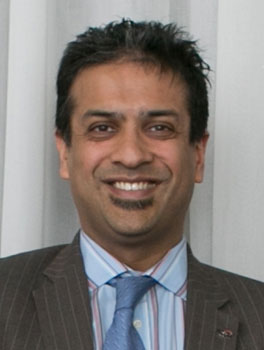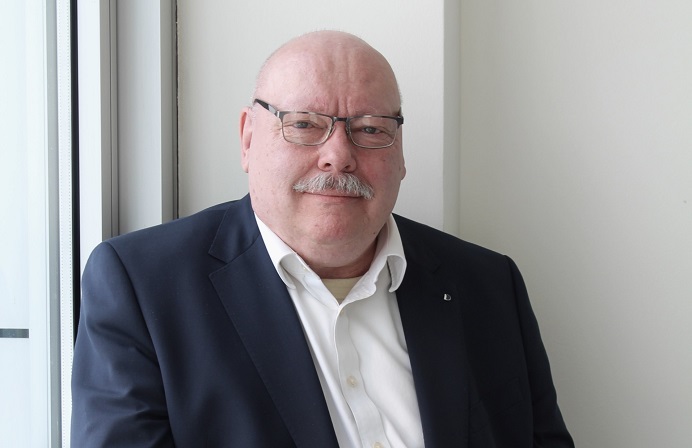
Sainsbury: What are your priorities for the next 12-18 months?
Jain: There are three main priorities, each of which has been a work in progress for a number of years.
The first is an on-going focus on making our digital services more customer-centric. This involves making products both consistent and simple to achieve a greater sense of intimacy and community.
The second is to leverage our affiliate and vendor partnerships through a process of co-engagement for the benefit of our consumer and corporate clients. To make this happen we need a strategic understanding of each other’s businesses to discover the shared benefits we can bring to customer relationships.
The third is to maintain highly resilient and secure systems which leverage Citi’s global business to achieve scalable support which will in turn drive efficient growth.
Sainsbury: What technology innovations do you see having the greatest impact on the retail banking industry?
Jain: The most profound technology improvements will result in significantly better service. This starts with fully capable mobile platforms (both smartphones and tablets) which allow for servicing to seamlessly move between channels, starting in one and finishing in another.
Then it is a matter of giving the customer an environment they can personalise and control. This will be provided by processing capability and algorithms which allow much richer analysis of customer and merchant data banks supplemented over time with data from real time events – where the customer is and what is happening in the world around them associated with their likes and community.
Sainsbury: How do you see the cards space being impacted by some of the new payments innovations, such as NFC and mobile wallets?
Jain: Initially, being ‘top of wallet’ in a mobile wallet will become even more important as customers pick one card which becomes their default. Longer term, however, the mobile wallet will be able to optimize which card is selected based on values of the card – the rewards, interchange, foreign exchange capabilities and other parameters. It will mean the value proposition of each card will need to become even more finely tuned.
We may also see the idea of going to a checkout disappear as POS devices become mobile (we are already there with smartphone based card readers) and even transparent, triggered when one walks through a store with merchandise and your device.
Sainsbury: What are some of the technologies and business processes outside of financial services that you think could be ‘brought in’ to this industry?
Jain: I have observed that other industries have devised better ways to bundle products, for both acquiring and servicing customers. They are also working on providing service in a consistent manner across countries, and while other businesses such as Apple iTunes and Amazon have not made this seamless they are trying various approaches from which banks could learn.
Sainsbury: Where are the opportunities for technology to build customer trust in their bank?
Jain: In addition to security- focused technologies based on multi factor authentication such as biometrics, dynamic pins via independent channels, firewalls, and intrusion detection; we can do more as an industry and community to educate customers on how to securely use each channel and avoid account takeover through social engineering.
Sainsbury: What role do you see technology playing in your branch network as you continue to refresh and modernise it?
Jain: Technology can be used to make the branch experience consistent with the experience in all other channels so customers do not spend time repeating a partially completed activity from another channel.
New technologies will also allow the customer to be easily authenticated, by carrying a mobile combined with facial recognition – or even detecting the way you walk! This will mean your interaction in the branch can be fully about personal engagement with staff focused on advisory services.
Sainsbury: You previously worked for Citi in Japan; what differences in terms of culture and approach to innovation have you found between Japan and Australia?
Jain: In addition to working in Japan for ten years, I worked in Hong Kong, London and for a short time in New York for a couple of banks and what strikes me the most is in fact the similarities. Everyone works hard and there is a genuine passion to make a meaningful difference for customers. It is just that sometimes when you work in ‘headquarters’ you feel countries do not appreciate the value of common systems and support; and vice versa, when you work ‘in country’, you feel it is hard to appropriately influence global direction! As for the difference between Japan and Australia, perhaps there are some elements of work culture although it is dangerous to over generalize. As a manager in Japan, one focused on ensuring the team is in consensus on execution whereas in Australia, one is focused more on getting ‘buy in’ for the rationale in order to get discretionary effort. But a sense of ‘why’ is important everywhere.
Sainsbury: What do you consider to be the greatest challenges facing CIOs in today’s environment?
Jain: Developing a customer centric technology strategy where the customer can choose the channel and personalise the experience. Everything needs to be flexible with adjustable parameters yet infrastructure needs to be efficient with no underutilized capacity and no customer outages.
Sainsbury: Every leader, particularly at your level, has a legacy they wish to be remembered for. What is yours?
Jain: I want people to say Operations and Technology fully drove the business priorities by defining and delivering them, not just supporting them. The function is as responsible for revenues as it is for costs and has moved from being ‘back office’ to ‘trusted advisor’ to ‘one and the same as the business’. At Citi Australia and New Zealand this is definitely in progress and very achievable.
Related links:
An interview with Anthony Nappi, Chief Administrative Officer, Citi Asia Pacific





